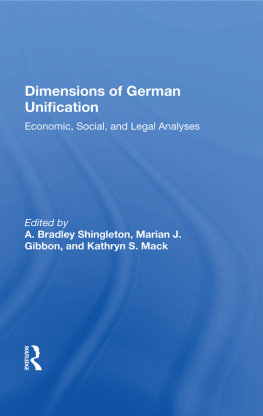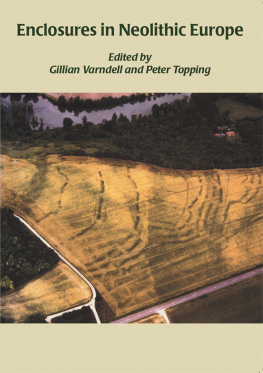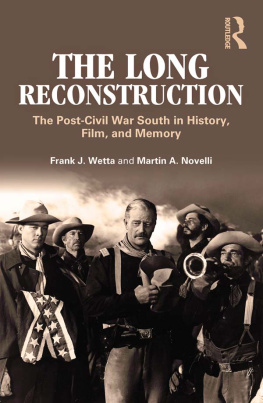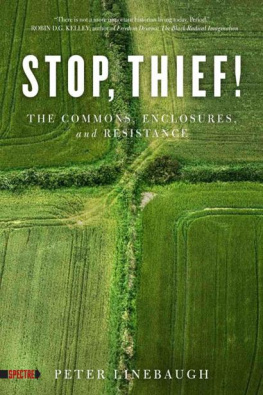INTRODUCTION
Table of Contents
The enclosure movementthe process by which the common-field system was broken down and replaced by a system of unrestricted private useinvolved economic and social changes which make it one of the important subjects in English economic history. When it began, the arable fields of a community lay divided in a multitude of strips separated from each other only by borders of unplowed turf. Each landholder was in possession of a number of these strips, widely separated from each other, and scattered all over the open fields, so that he had a share in each of the various grades of land.[fields into sheep pasture. This involved the eviction of the tenants who had been engaged in cultivating these fields and the amalgamation of many holdings of arable to form a few large enclosures for sheep. The enclosure movement was not merely the displacement of one system of tillage by another system of tillage; it involved the temporary displacement of tillage itself in favor of grazing.
In this monograph two things are undertaken: first, an analysis of the usually accepted version of the enclosure movement in the light of contemporary evidence; and, secondly, the presentation of another account of the nature and causes of the movement, consistent with itself and with the available evidence. The popular account of the enclosure movement turns upon a supposed advance in the price of wool, due to the expansion of the woollen industry in the fifteenth and sixteenth centuries. Landlords at this period (we are told) were increasingly eager for pecuniary gain and, because of the greater profit to be made from grazing, were willing to evict the tenants on their land and convert the arable fields to sheep pasture. About the end of the sixteenth century, it is said, this first enclosure movement came to an end, for there are evidences of the reconversion of pastures formerly laid to grass. An inquiry into the evidence shows that the price of wool fell during the fifteenth century and failed to rise as rapidly as that of wheat during the sixteenth century. Moreover, the conversion of arable land to pasture did not cease when the contrary process set in, but continued throughout the seventeenth century with apparently unabated vigor. These facts make it impossible to accept the current theory of the enclosure movement. There is, on the other hand, abundant evidence that the fertility of much of the common-field land had been exhausted by centuries of cultivation. Some of it was allowed to run to waste; some was laid to grass, enclosed, and used as pasture. Productivity was gradually restored after some years of rest, and it became possible to resume cultivation. The enclosure movement is explained not by a change in the price of wool, but by the gradual loss of productivity of common-field land.
This explanation is not made here for the first time. It is advanced in Denton's England in the Fifteenth Century[] who objects that Denton does not prove his case. In this respect the theory is no more to be criticised than the theory which these authorities accept, for that does not rest upon proof, but upon the prestige gained through frequent repetition. But the matter need not rest here. It is unnecessary to accept any hypothetical account of events which are, after all, comparatively recent, and for which the evidence is available.
Of the various sources accessible for the study of the English enclosure movement, one type only has been extensively used by historians. The whole story of this movement as it is usually told is based upon tracts, sermons, verses, proclamations, etc. of the sixteenth centuryupon the literature of protest called forth by the social distress caused by enclosure. Until very recently the similar literature of the seventeenth century has been neglected, although it destroys the basis of assumptions which are fundamental to the orthodox account of the movement. Much of significance even in the literature of the sixteenth century has been passed overnotably certain striking passages in statutes of the latter half of the century, and in books on husbandry of the first half. Details of manorial history derived from the account rolls of the manors themselves, and contemporary manorial maps and surveys, as well as the records of the actual market prices of grain and wool, have been ignored in the construction of an hypothetical account of the movement which breaks down whenever verification by contemporary evidence is attempted.
The evidence is in many respects imperfect. It would be of great value, for instance, to have access to records of grain production over an area extensive enough, and for a long enough period, to furnish reliable statistical indications of the trend of productivity. It would be helpful to have exact information about the amount of land converted from arable to pasture in each decade of the period under consideration, and to know to what extent and at what dates land was reconverted to tillage after having been laid to grass. There are no records to supply most of this information. It is possible that the materials for a statistical study of soil productivity are in existence, but up to the present time they have not been published, and it is doubtful if this deficiency will be supplied. It is even more doubtful whether more can be learned about the rate of conversion of arable land to pasture than is now known, and this is little. Pro ] The conditions under which these commissions worked make the returns somewhat unreliable even for the years covered by their reports, and much interpolation is necessary, as there are serious gaps in the series of years for which returns are made. For dates outside of the period 1485-1630 we must rely entirely on literary references. Unsatisfactory as our statistical information is on this important question, it is far more complete than the evidence on the subject of the reconversion to tillage of arable land which had been turned into pasture.
It is to the unfortunate social consequences of enclosure that we owe the abundance of historical material on this subject. Undoubtedly much land was converted to pasture in a piece-meal fashion, as small holders saw the possibility of making the change quietly, and without disturbing the rest of the community. If enclosure had taken no other form than this, no storm of public protest would have risen, to express itself in pamphlets, sermons, statutes and government reports. Enclosure on a large scale involved dispossession of the inhabitants, and a complete break with traditional usage. For this reason the literature of the subject is abundant. When, however, the process was reversed, and the land again brought under cultivation, there was involved no interference with the rights of common holders. It was to the interest of no one to oppose this change, and no protest was made to call the attention of the historian to what was being done. References to the process are numerous enough only to prove that reconversion of land formerly laid to grass took place during the fifteenth, sixteenth, and seventeenth centuriesto an extent of which not even an approximate estimate can be made.
Imperfect as the evidence is from some points of view, it is nevertheless complete for the purposes of this monograph. It would be impossible, with the material at hand, to reconstruct the progress of the enclosure movement, decade by decade, and county by county, throughout England. My intention, however, is not so much to describe the movement in detail as it is to give a consistent account of its nature and causes. Even a few sixteenth-century instances of the plowing up of pasture land should be enough to arrest the attention of historians who believe that the conversion of arable land to pasture during this period is sufficiently explained by an assertion that the price of wool was high. What especial circumstances made it advantageous to cultivate land which had been under grass, while other land was being withdrawn from cultivation? Contemporary writers speak of the need of worn land for rest for a long period of years, and remark that it will bear well again at the end of the period. Evidence such as this is significant without the further information which would enable us to estimate the amount of land affected. For our purposes, also, the notice of enclosure of arable land for pasture on one group of manors in the early thirteenth century is important as an indication that the fundamental cause of the enclosure movement was at work long before the Black Death, which is usually taken as the event in which the movement had its beginning. Low rents, pauperism, and abandonment of land are facts which indicate declining productivity of the soil, and statistical records of the harvests reaped are not ] It is to this material that the defenders of the theory that enclosures are explained by the price of wool should turn, for they will find a fall of price where they assume that a rise took place. Instead of an increase in the supply of wool due to a rise in its price, there is indicated a fall in the price of wool due to an increase in the supply. The cause of the increase of the supply of wool must be sought outside of the price conditions.









